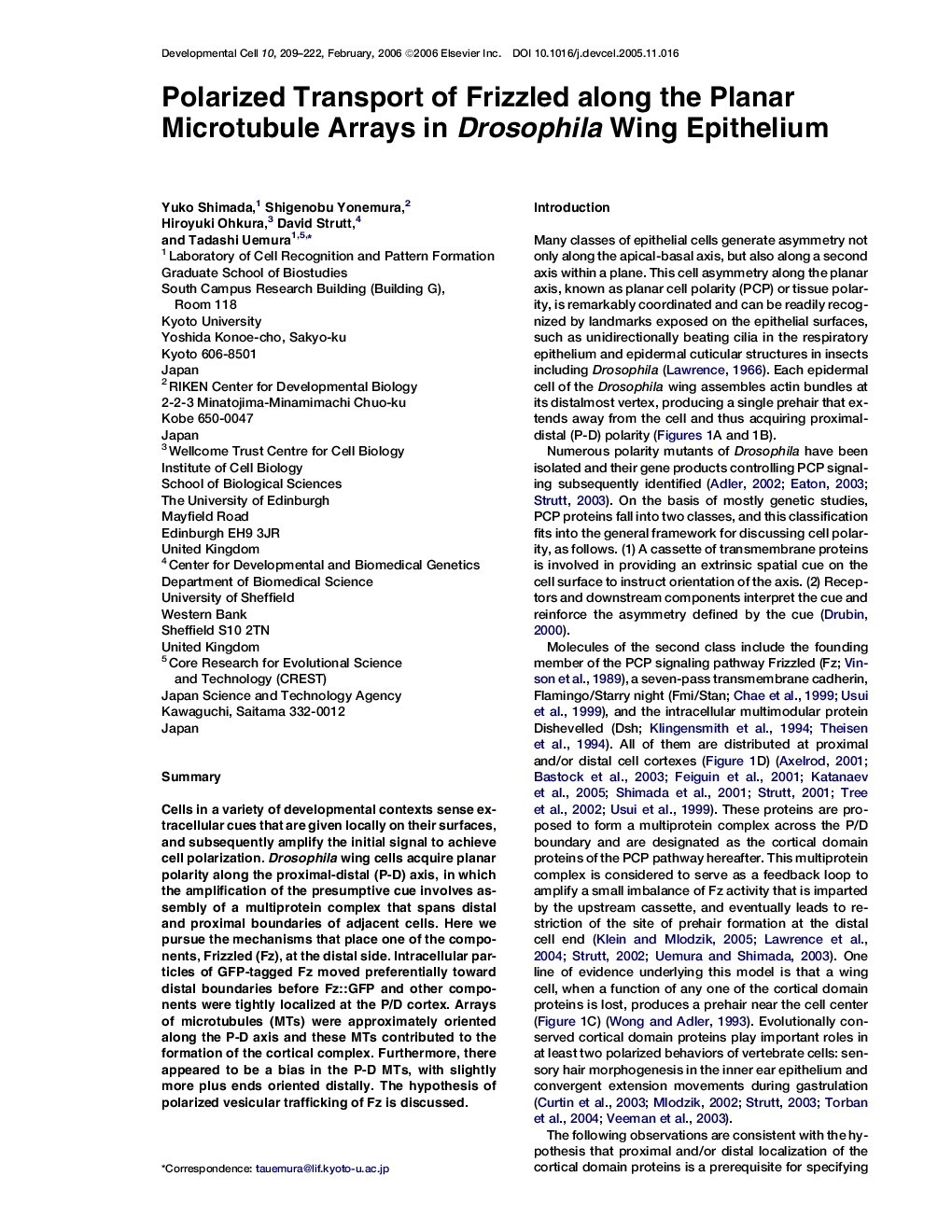| Article ID | Journal | Published Year | Pages | File Type |
|---|---|---|---|---|
| 2177873 | Developmental Cell | 2006 | 14 Pages |
SummaryCells in a variety of developmental contexts sense extracellular cues that are given locally on their surfaces, and subsequently amplify the initial signal to achieve cell polarization. Drosophila wing cells acquire planar polarity along the proximal-distal (P-D) axis, in which the amplification of the presumptive cue involves assembly of a multiprotein complex that spans distal and proximal boundaries of adjacent cells. Here we pursue the mechanisms that place one of the components, Frizzled (Fz), at the distal side. Intracellular particles of GFP-tagged Fz moved preferentially toward distal boundaries before Fz::GFP and other components were tightly localized at the P/D cortex. Arrays of microtubules (MTs) were approximately oriented along the P-D axis and these MTs contributed to the formation of the cortical complex. Furthermore, there appeared to be a bias in the P-D MTs, with slightly more plus ends oriented distally. The hypothesis of polarized vesicular trafficking of Fz is discussed.
